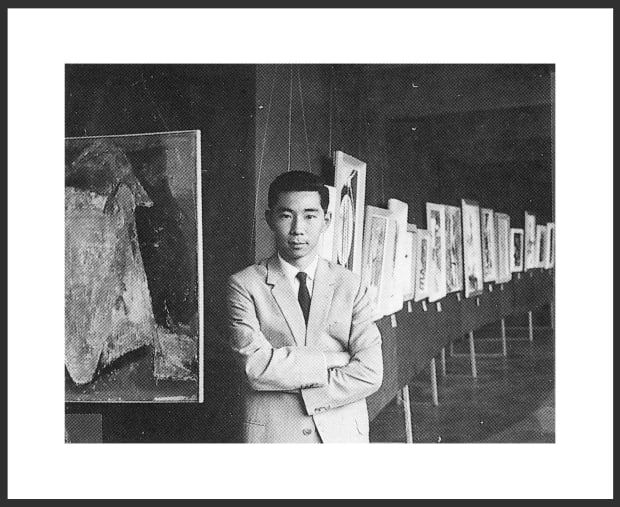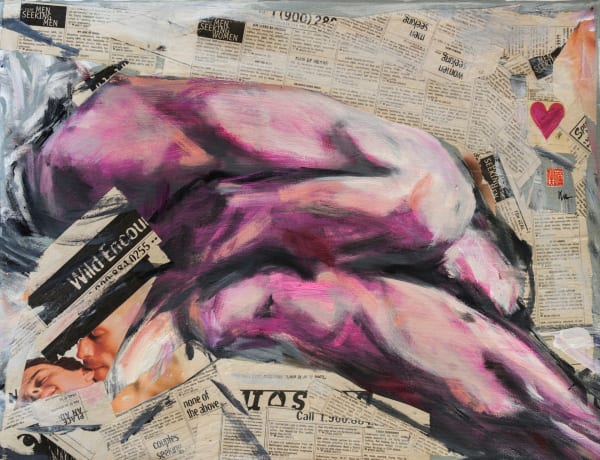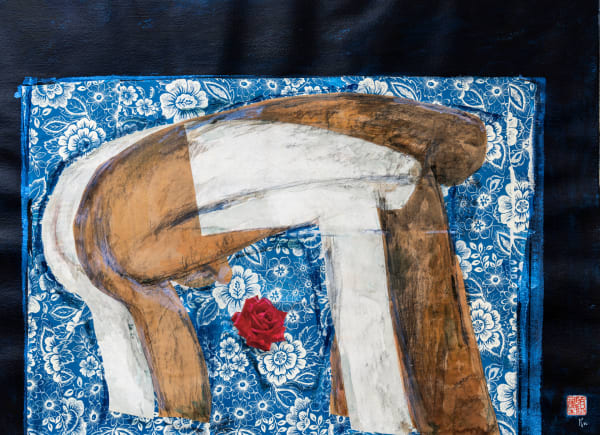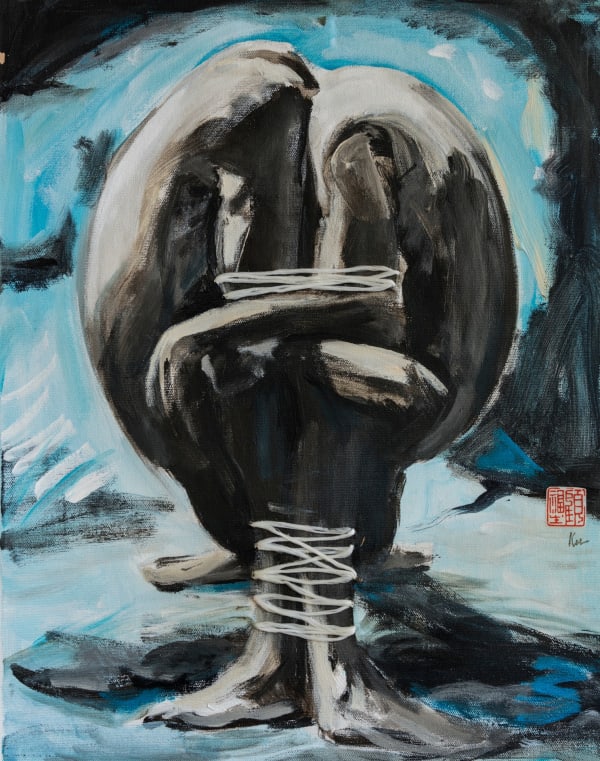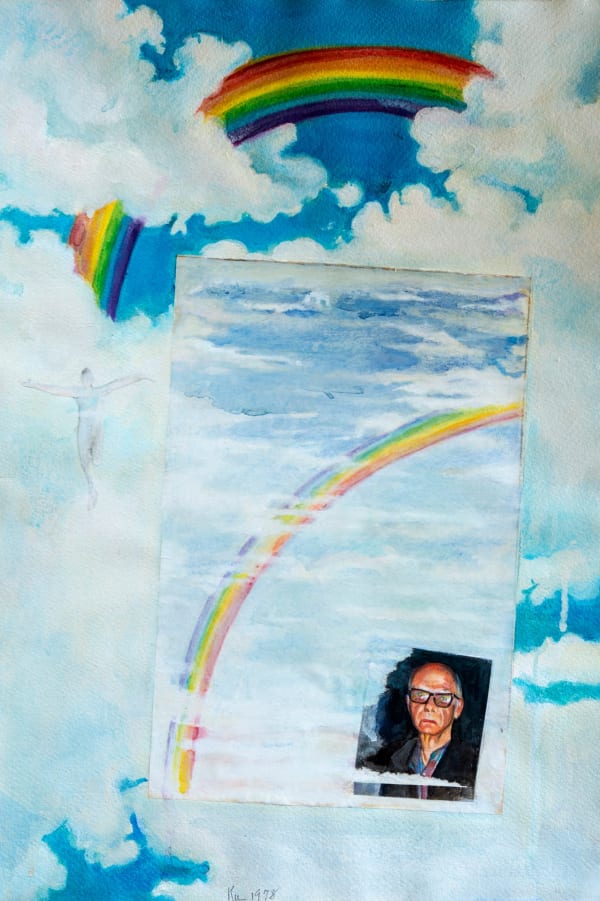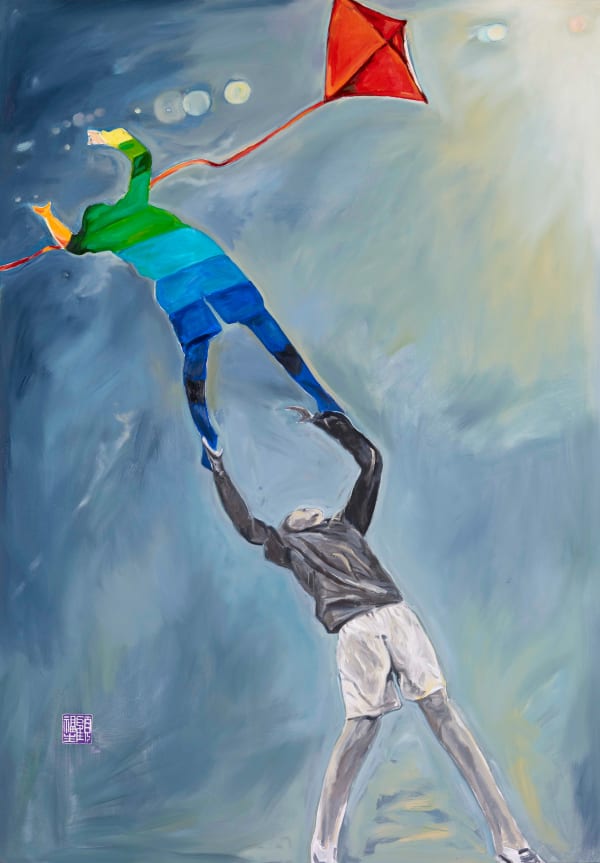-

Fu-sheng KU’s first solo exhibition in Taipei, 1961.
-
-

-
-
After KU went to Europe and the US, particularly during his time in New York, his headless human bodies became a more obvious and open formal motif that appeared in large numbers of his paintings. In 1964, Kenneth Hsien-yung Pai revisited KU’s studio in New York. According to his observations, KU’s paintings of this period had broken away from his previous “Blue Period” in Taiwan: “His paintings in this period are still dominated by the human body... but these human bodies are free of the rigidity and gravity of his earlier days, as they take off the ground and become more colorful.” To Pai, “Fu-sheng KU’s paintings have transmuted from his early immobile melancholy to animated anxiety.”
The “animated anxiety” that Pai refers to is in fact a movement that is constantly running or running away. Since the human bodies in the painting don’t know where to run to and sometimes appear to be floating, it is likely to interpret them as a projection of anxiety that has no place to settle or a psychological lack of direction.
-
-
Without a head means death. In a literary sense, KU’s “headless man” imagery may also be understood as the symbiosis of death and rebirth. Facing the superego expected of him by the social institution and his family background, KU chose to dissociate and alienate to return to the calling and identity of his id (true self). KU achieved self-enlightenment through art and bravely opened the body that’s originally covered. In this process of identity enlightenment, the “headless man” declares the death of the old identity with the bearing of self-imposed exile, and in the midst establishes the integrity of his true self.
Sigmund Freud (1856-1939) once analyzed the decapitation of Medusa in ancient Greek mythology from the perspective of psychology. From the images of Medusa as seen throughout mythology and art history, Freud straightforwardly equated decapitation with castration. In contrast, KU’s spontaneous choice of using the image of a headless man as a symbol of his personal body representation and his painting style also point to feminine aesthetics.
-

-
-
-

-
Tap here for more " Fu-Sheng KU Solo Exhibition - Song of Myself ".
Above article written by Chia Chi Jason WANG
Sacred Realm of Flowers──A Preliminary Look at Fu-sheng KU’s Art
